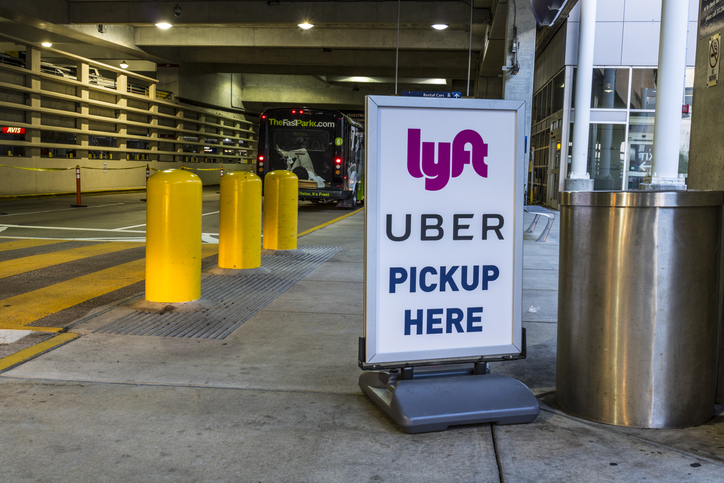Lyft Inc said a price war with rival Uber was easing, boosting shares of both companies and allowing Lyft to raise its outlook for the year and forecast a faster path to profitability.
Lyft said increased revenue per rider would lift both third-quarter sales and full-year revenue above Wall Street estimates. That sent Lyft shares up 5% and shares of Uber Technologies Inc up 3.8% in after-hour trade.
“We believe these price adjustments are an industry trend,” Chief Financial Officer Brian Roberts said on a call with analysts. He said 2018 was likely the peak of losses for Lyft, an improvement from the company’s previous target of reporting its biggest loss this year.
Lyft shares temporarily turned negative after it announced plans to bring forward its lock-up period – the time after a public offering in which large shareholders are prohibited from selling shares – to Aug. 19 from Sept. 24.
Lyft estimated that about 257.6 million shares could become eligible for sale when the trading restrictions ended.
A loss of $2.23 per share in the quarter was worse than the $1.74 per-share loss expected, on average, by analysts, according to IBES data from Refinitiv.
Still, Lyft’s raising its outlook for revenue and adjusted losses for the full year were “welcome signs,” said Wedbush analyst Ygal Arounian.
Lyft’s 72% jump in revenue was fueled by more active riders, who spent about a quarter more than they had a year ago.
Roberts said that pricing for rides had become “more rational” in the quarter, meaning that Lyft spends less on promotions to beat rival Uber. He also said that the company was focused on profitable growth, rather than growth at all costs.
Shares of Lyft are down 25% since their market debut on March 29, erasing about $5 billion from its market capitalization, as investors continue to question whether the ride-hailing industry can be profitable.
Lyft and larger rival Uber, both loss-making, have historically relied on heavy subsidization to attract riders. While the companies last quarter reported signs that price competition was easing, both are also spending to expand services into areas including self-driving technology for Lyft and food delivery for Uber.
On average, Lyft received $39.77 in revenue from each of its nearly 22 million active riders in its second quarter as a public company, a 22% rise in revenue per rider and 41% increase in riders over the same period in 2018.
Chief Executive Officer Logan Green said in a statement that 2019 losses would be “better than previously expected.”
Lyft has said its ride-hailing services would be profitable in the future, without giving any timeline, while also warning regulators that as a company it might continue posting losses as it invests heavily in self-driving cars, renting scooters and other ventures.
The company forecast third-quarter revenue of $900 million to $915 million, above the average analyst estimate of $840.9 million.
Lyft also raised its forecast for full-year revenue to between $3.47 billion and $3.5 billion, up from its prior range of $3.28 billion and $3.3 billion.
Its revenue in the second quarter rose 72% to $867.3 million, above the average analyst estimate of $809.3 million, according to IBES data from Refinitiv.
But its net loss widened to $644.2 million from $178.9 million a year earlier as costs more than doubled to $1.54 billion from a year earlier.
On a per share basis, it narrowed to $2.23 per share from $8.48 per share, a year earlier, as the number of outstanding shares rose.
Lyft, which beat Uber to go public first, operates in over 300 cities in the United States and Canada. Uber says it had over 30 million riders in 2018.






